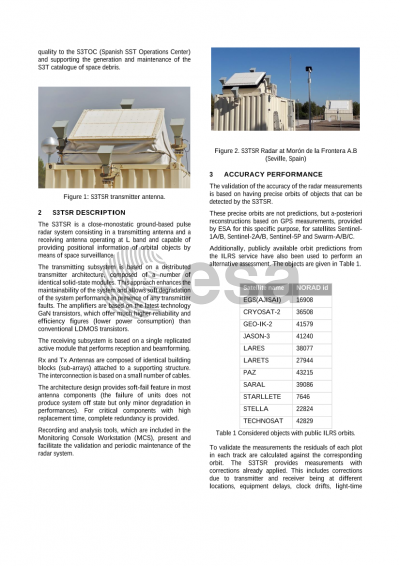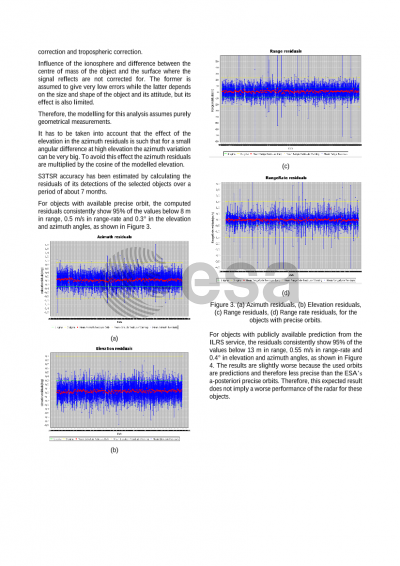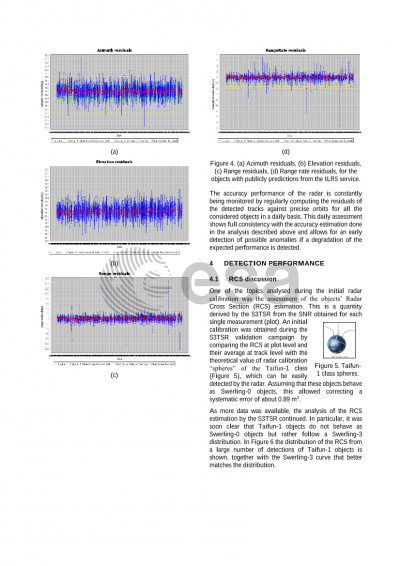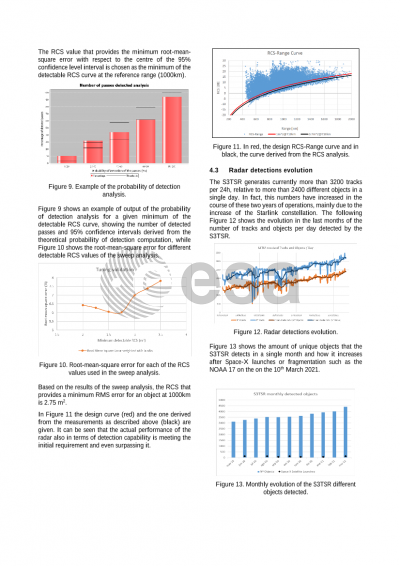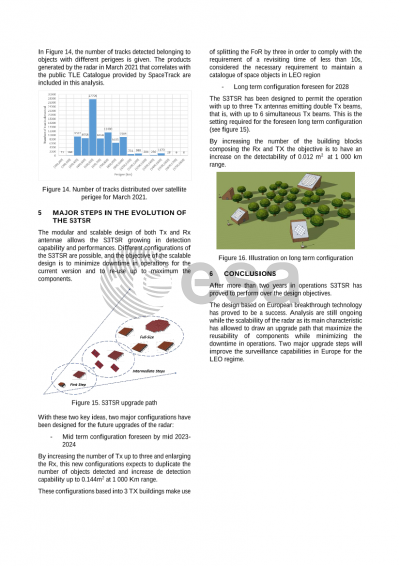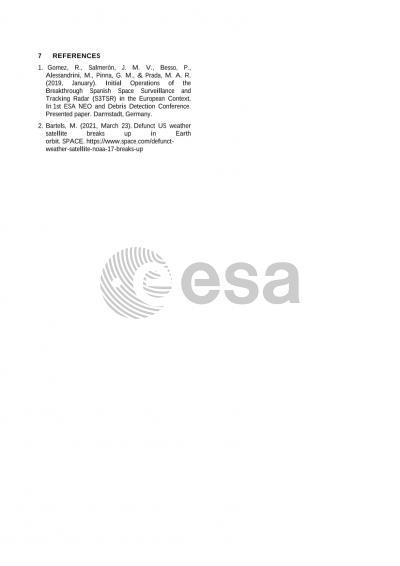Document details
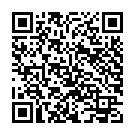
Abstract
The Spanish Space Surveillance and Tracking Surveillance Radar (S3TSR) is a radar system developed by Indra within a project technically followed by ESA and funded by the Spanish Administration through CDTI management. It is a ground-based radar in close monostatic configuration, operating at L-band and capable of providing positional information of orbital objects. The radar provides automatic surveillance and tracking of space objects in Low Earth Orbit (LEO), from 200 km to 2000 Km of orbit height above Earth. This is performed by continuously scanning the instrumented Field of Regard (FoR), generating track reports for all detected objects. Surveillance and tracking of LEO objects are activities with increasing strategic value, essential to perform conjunction analysis and to provide services such as collision avoidance and fragmentation, and prevent further debris generation.
The S3TSR is operated 24x7 since early 2019 and is providing high accuracy tracks to the Spanish Space Surveillance and Tracking Operation Centre (S3TOC), where they are used to maintain a catalogue of currently more than 2 000 LEO objects and to generate autonomous conjunction analysis products.
This paper will highlight the measured performance of the S3TSR, comparing them versus the expected performance according to the design of the radar, and provide some of the results from the analysis of the operational data.
The paper will present the analysis of the range and angular position of the objects detected, as well as the objects’ Radar Cross Section (RCS) derived from the Signal To Noise Ratio (SNR) measured by the radar.
After more than two years in operation, an overview of the performances and the S3TSR contribution to safeguard the space environment will be presented assessing the powerful potential the S3TSR has with its scalability design.
Preview

